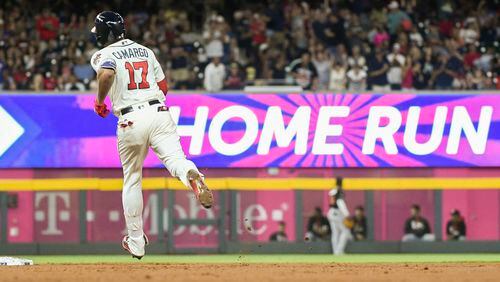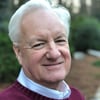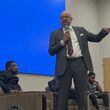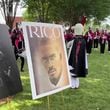In April and May, home runs flew out of SunTrust Park in a way reminiscent of old Atlanta-Fulton County Stadium, which was such a hitter-friendly park that it became known as The Launching Pad.
“At the beginning of the season, when balls were going from here to planet Mars, I thought, ‘Oh my goodness, what have we created?’” Braves Vice Chairman John Schuerholz said this week.
But eventually the new stadium’s early power surge moderated, as most short-sample-size spurts do in baseball.
And as SunTrust Park’s inaugural season wraps up with the Braves’ final home series this weekend, a season’s worth of data refutes – or at least fails to confirm -- the early suggestions of Launching Pad II.
“It mitigated. It leveled out,” said Schuerholz, who was involved in crafting the new stadium’s dimensions. “The fact is home runs are up in every ballpark.
“I think it plays fair. We didn’t build a bandbox.”
Yes, considerably more home runs have been hit at SunTrust Park (170 in 78 games entering this weekend) than were hit at Turner Field last season (130 in 80 games). That’s a 35-percent increase from 1.62 home runs per game at The Ted last year to 2.18 home runs per game at SunTrust Park this year.
But when compared with the 14 other National League stadiums this season, SunTrust Park’s 2.18 home runs per game rank as the fifth lowest and below the league-wide average of 2.41 homers per game.
More home runs have been hit across MLB this season than in any other year, breaking the record set in 2000.
SunTrust Park’s outfield distances aren’t substantially different than Turner Field’s, except in right-center, which is 15 feet shorter (375 feet to the wall vs. 390 at The Ted). The outfield wall height, which was eight feet and four inches all the way around at Turner Field, varies at SunTrust Park from six feet in the left-field corner to 16 feet in right field.
But what struck observers, players and fans alike, during the early-season power surge is how well the ball carried.
Braves executives consulted wind studies from nearby Dobbins Air Reserve Base in designing the ballpark, but they began to wonder in April if construction of the Omni hotel and Comcast office tower beyond the outfield had changed wind patterns and created some sort of draft pulling balls out.
“Maybe it was atmospheric pressure,” Schuerholz said this week. “I mean, who really knows?”
And who really knows why the home runs diminished later in the season?
It’s probably not entirely because of anything stadium-related. Another factor is that the Braves simply aren’t a big power-hitting team. They rank 13th in the NL (and 27th in MLB) in home runs. Add another power hitter or two to the Braves’ lineup, and their home stadium’s home-run numbers presumably would be significantly higher.
Of the 170 home runs hit at SunTrust Park through Thursday, 74 had been hit by the Braves, the third fewest by any NL team at home this season, and 96 by the opposition, tied with Colorado for fourth most allowed by an NL pitching staff at home this season.
The Braves have hit slightly more home runs on the road (1.1 per game) than at home (0.95 per game). And their pitchers have given up homers at about the same rate on the road (1.21 per game) as at home (1.23 per game).
Still, the home run is more a part of the game – almost every game – at SunTrust Park than it was at Turner Field.
“We just looked it up: There have only been six games here all year (now seven) where there hasn’t been at least one homer,” Braves broadcaster Chip Caray said a few days ago.
In the first 22 games at SunTrust Park, a combined 55 home runs were hit by the Braves and their opponents – 2.5 per game. In the next 56 games there, 115 home runs were hit – 2.05 per game.
“It doesn’t seem to me as lively as it was early in the season,” Caray said of how the ball carries. “I’m hoping that our guys are learning to pitch here. I’m hoping the early-season wind-blown home runs were just an aberration, just kind of a crazy weather pattern, and that the park is starting to settle in.”
The verdict isn’t in on how SunTrust Park will play over the longer haul -- whether it ultimately will favor hitters, as it did at times this season, or whether it will treat hitters and pitchers neutrally, as it was intended to do.
“I would posit to you this is not a one-month or two-month or even a one-season answer,” Braves Chairman and CEO Terry McGuirk said. “You’re going to need to see our team develop over a certain period of time. You’re going to need to see the kind of players that come through. The answer is still out there.”







